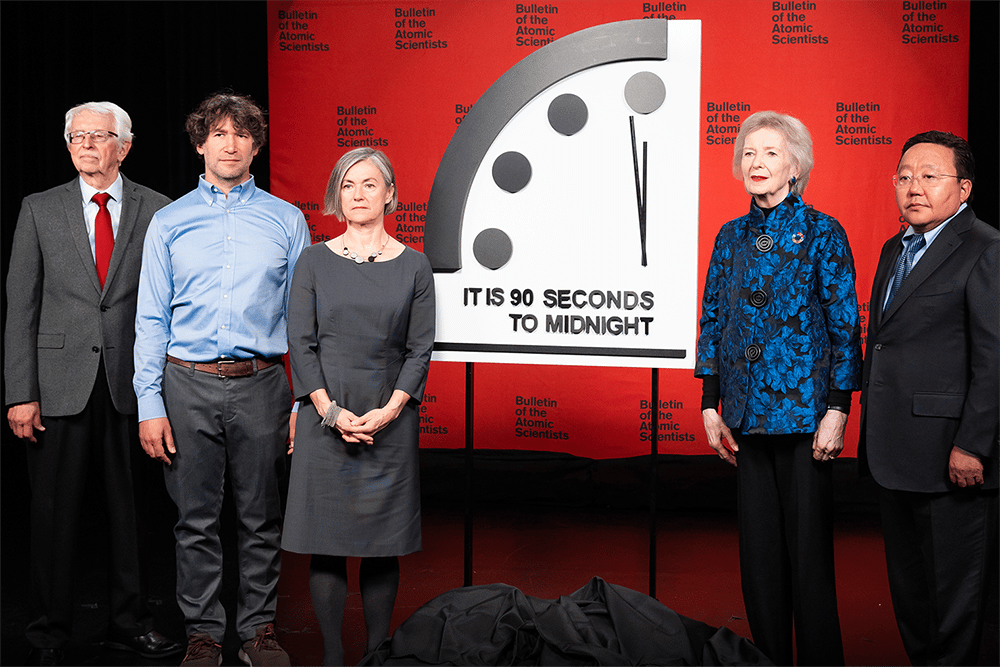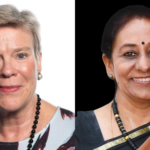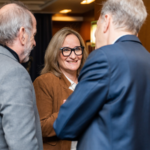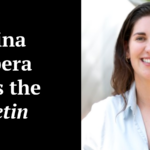PRESS RELEASE: Doomsday Clock set at 90 seconds to midnight
By Bulletin Staff | January 24, 2023

ENGLISH • РУССКИЙ • УКРАЇНСЬКА
“Unprecedented Danger”: Russia-Ukraine War Pushes Iconic Doomsday Clock Closest to Midnight Ever in its History.
Bulletin of the Atomic Scientists Also Cite Bio-Threats, Nuclear Proliferation, Climate Crisis, State-Sponsored Disinformation and Disruptive Technology.
WASHINGTON, D.C. – January 24, 2023 –The Doomsday Clock was set at 90 seconds to midnight, due largely but not exclusively to Russia’s invasion of Ukraine and the increased risk of nuclear escalation. The new Clock time was also influenced by continuing threats posed by the climate crisis and the breakdown of global norms and institutions needed to mitigate risks associated with advancing technologies and biological threats such as COVID-19.
Rachel Bronson, PhD, president and CEO, Bulletin of the Atomic Scientists, said: “We are living in a time of unprecedented danger, and the Doomsday Clock time reflects that reality. 90 seconds to midnight is the closest the Clock has ever been set to midnight, and it’s a decision our experts do not take lightly. The US government, its NATO allies and Ukraine have a multitude of channels for dialogue; we urge leaders to explore all of them to their fullest ability to turn back the Clock.”
The Doomsday Clock’s time is set by the Bulletin of the Atomic Scientists’ Science and Security Board with the support of the Bulletin’s Board of Sponsors, which includes 10 Nobel Laureates. Previously, the Doomsday Clock had been set at 100 seconds to midnight since 2020.
The Doomsday Clock statement explains that “Russia’s war on Ukraine has raised profound questions about how states interact, eroding norms of international conduct that underpin successful responses to a variety of global risks. And worst of all, Russia’s thinly veiled threats to use nuclear weapons remind the world that escalation of the conflict—by accident, intention, or miscalculation—is a terrible risk. The possibility that the conflict could spin out of anyone’s control remains high . . .. Russia has also brought its war to the Chernobyl and Zaporizhzhia nuclear reactor sites, violating international protocols and risking widespread release of radioactive materials. Efforts by the International Atomic Energy Agency to secure these plants so far have been rebuffed.” The statement has been translated into Ukrainian and Russian.
Mary Robinson, Chair of The Elders and former UN High Commissioner for Human Rights, said:
“The Doomsday Clock is sounding an alarm for the whole of humanity. We are on the brink of a precipice. But our leaders are not acting at sufficient speed or scale to secure a peaceful and liveable planet. From cutting carbon emissions to strengthening arms control treaties and investing in pandemic preparedness, we know what needs to be done. The science is clear, but the political will is lacking. This must change in 2023 if we are to avert catastrophe. We are facing multiple, existential crises. Leaders need a crisis mindset.”
Ban Ki-moon, Deputy Chair of The Elders and former Secretary-General of the United Nations, said:
“Three years ago, I helped unveil the Doomsday Clock when its hands were last moved. Today they are even closer to midnight, showing how much more perilous our world has become in the wake of the COVID-19 pandemic, extreme weather events and Russia’s outrageous war on Ukraine. Leaders did not heed the Doomsday Clock’s warnings in 2020. We all continue to pay the price. In 2023 it is vital for all our sakes that they act.”
Elbegdorj Tsakhia, former President of Mongolia and member of The Elders, added: “As a former President of a country landlocked between two large powers, I know how important international diplomacy is when it comes to tackling existential threats. Today our world faces multiple crises. A common thread runs through them all: failure of leadership. We need a collective response rooted in the spirit and values of the UN Charter that can put us back on a pathway to peaceful co-existence and sustainable development.”
Sivan Kartha, PhD, senior scientist, Stockholm Environmental Institute, lead author for the IPCC Sixth Assessment Report, and member, Science and Security Board (SASB), Bulletin of the Atomic Scientists, said: “Dealing with the crisis of climate change requires faith in institutions of multilateral governance and cooperation. The geopolitical fissure opened by the invasion of Ukraine has weakened trust among countries and the global will to cooperate.”
Suzet McKinney, DrPH, Principal and Director of Life Sciences, Sterling Bay, and member, Science and Security Board (SASB), Bulletin of the Atomic Scientists, said: “Devastating events like the COVID-19 pandemic can no longer be considered rare, once-a-century occurrences. However, disease-induced disaster can be avoided if countries around the world cooperate on global health strategies.”
Steve Fetter, PhD, dean of the graduate school and professor of public policy, University of Maryland, fellow, American Physical Society, member, National Academy of Sciences Committee on International Security and Arms Control, and member, Science and Security Board (SASB), Bulletin of the Atomic Scientists, said: “Even if nuclear use is avoided in Ukraine, the war has challenged the nuclear order—the system of agreements and understandings that have been constructed over six decades to limit the dangers of nuclear weapons.”
The 2023 Doomsday Clock statement details other threats and threat multipliers beyond the most immediate risks related to the Russia-Ukraine War:
Nuclear Weapons
- The last remaining nuclear weapons treaty between Russia and the United States, New START, stands in jeopardy. Unless the two parties resume negotiations and find a basis for further reductions, the treaty will expire in February 2026. This would eliminate mutual inspections, deepen mistrust, spur a nuclear arms race, and heighten the possibility of a nuclear exchange.
- China’s considerable expansion of its nuclear capabilities is particularly troubling, given its consistent refusal to consider measures to enhance transparency and predictability. The US Defense Department claims Beijing may increase its arsenal fivefold by 2035 and could soon rival the nuclear capabilities of the United States and Russia, with unpredictable consequences for stability.
- North Korea has greatly stepped up its intermediate and longer-range missile testing. In late March, North Korea successfully launched an intercontinental ballistic missile for the first time since 2017. In the following months, it also launched numerous other ballistic missiles, most of short range. Perhaps most concerning, on October 4, North Korea launched an intermediate-range ballistic missile over Japan. Meanwhile, US officials contend that North Korea is preparing to conduct its seventh nuclear weapon test.
- Iran continues to increase its uranium enrichment capacity, albeit under international safeguards outside the confines of the Joint Comprehensive Plan of Action that once restrained it. This positions Iran closer to a nuclear weapons capability, should it decide to cross that threshold. Returning to the nuclear deal would reduce risks and provide a path forward, and the United States, Europe, and other countries have made reasonable efforts to revive the deal. But instability in Iran and Tehran’s support for Russia’s war against Ukraine will complicate successful negotiations to keep Iran from acquiring nuclear weapons.
- India continues to modernize its nuclear arsenal of some 160 warheads, with new delivery systems now under development to complement or replace existing nuclear-capable aircraft, land-based delivery systems, and sea-based systems. Pakistan has an arsenal of similar size and continues to expand its warheads, delivery systems, and fissile material production.
- The United States, Russia, and China are now pursuing full-fledged nuclear weapons modernization programs, setting the table for a dangerous new “third nuclear age” of competition. Long-standing concerns about arms racing in South Asia and missile arms races in Northeast Asia complete a dismal picture that needs to be addressed.
Climate Crisis
- The Russia-Ukraine War’s effects are not limited to an increase in nuclear danger; they also undermine global efforts to combat climate change. Countries dependent on Russian oil and gas have sought to diversify their supplies and suppliers, leading to expanded investment in natural gas exactly when such investment should have been shrinking.
- Global carbon dioxide emissions from burning fossil fuels, after having rebounded from the COVID economic decline to an all-time high in 2021, continued to rise in 2022 and hit another record high. A decline in Chinese emissions was overshadowed by a rise in the US, India, and elsewhere.
- Not only did weather extremes continue to plague diverse parts of the globe, but they were more evidently attributable to climate change. Countries of West Africa experienced floods that were among the most lethal in their histories, owing to a rainfall event that was assessed to be 80 times more likely because of climate change. Extreme temperatures in Central Europe, North America, China, and other regions of the Northern Hemisphere this past summer led to water shortages and soil drought conditions that led in turn to poor harvests, further undermining food security at a time when the Ukraine conflict has already driven food price increases. Pakistan faced intense floods due to a “monsoon on steroids” that inundated one-third of the country, affecting 33 million people directly and unleashing cascading effects, including a major crop failure, an epidemic of water-borne diseases, and the destruction of infrastructure, homes, livestock, and livelihoods.
Bio-Threats
- Devastating events like the COVID-19 pandemic can no longer be considered rare, once-a-century occurrences. The total number and diversity of infectious disease outbreaks has increased significantly since 1980, with more than half caused by zoonotic diseases (that is, disease originating in animals and transmitted to humans). As such, zoonoses put the human population at significant risk for pandemics. There is immense, uncharacterized diversity within the 26 virus families and the many phyla of bacteria and other microbes known to infect humans. The world’s ability to predict which of these viruses and microbes are most likely to cause human disease is woefully inadequate.
- Laboratory accidents continue to occur frequently. Opportunities for human error, limited understanding of novel disease characteristics, lack of local government knowledge about the types of research occurring in labs in their jurisdictions, and confusion about lab safety requirements all challenge current laboratory biosafety and biosecurity programs. It is also easier now than ever to obtain and modify pathogens, increasing the chances of pandemics caused by laboratory accidents.
- Recent events—including especially the Russian invasion of Ukraine and its continuing disinformation efforts in regard to biological weapons—have changed the landscape of biological threats. The risk that Russia will engage in biological warfare increases as conditions in Ukraine become more chaotic, weakening norms of warfare. Escalation of the war in Ukraine poses many potentially existential threats to humanity; one of them is biological.
Disinformation and Disruptive Technology
- On the disinformation front, there was some good news: For the most part, the American electorate rejected election deniers in 2022, and in France, President Emmanuel Macron overcame a historic challenge from his country’s far-right candidate Marine Le Pen. Meanwhile, the Biden administration continued its efforts to increase the role of scientists in informing public policy.
- On the other hand, cyber-enabled disinformation continues unabated. In the United States, political opposition to a “Disinformation Governance Board” proposed by the Department of Homeland Security was grounded in willful misrepresentation and the politics of personal destruction. But non-substantive and misleading as its messages were, the opposition succeeded in causing the department to withdraw its proposal. These types of attacks are hardly new but are emblematic of corruption in the information environment.
- Inside Russia, meanwhile, government control of the information ecosystem has blocked the wide dissemination of truthful information about the Ukraine war. Chinese use of surveillance technology has continued apace in Xinjiang. As we stated last year, the extensive use of surveillance technologies has disturbing implications for human rights and poses a distinct threat to civil society.
- Russian President Vladimir Putin has also shredded norms of behavior in space, publicly threatening to use an anti-satellite weapon against US Starlink satellites, arguing that they are not merely a commercial system but a military one as well. Ukraine has made use of Starlink in its conflict with Russia.
The Bulletin of the Atomic Scientists was founded in 1945 by Albert Einstein, J. Robert Oppenheimer, Eugene Rabinowitch and University of Chicago scientists who helped develop the first atomic weapons in the Manhattan Project. The scientists felt that they “could not remain aloof to the consequences of their work” and worked to inform the public and policymakers about man-made threats to human existence.
The Doomsday Clock was created in 1947 by the Bulletin of the Atomic Scientists to convey how close humanity is to destroying itself. Designed by painter Martyl Langsdorf, the Clock has become an international symbol of the world’s vulnerability to catastrophe from nuclear weapons, climate change and disruptive technologies.
###
MEDIA CONTACTS: Alex Frank, (703) 276-3264 and [email protected], or Max Karlin, (703) 276-3255 and [email protected].
EDITOR’S NOTE: Additional members of the Bulletin’s Science and Security Board will be available for interviews on the day of and after the announcement: https://thebulletin.org/about-us/science-and-security-board/. Ukrainian and Russian versions of the materials will be made available to the media following the event.
An embeddable HD stream of the announcement is available here: https://www.youtube.com/watch?v=KxB9dM0u4mU
Hi-res video, photos, headshots and logos are available to members of the media at https://bit.ly/DDC2023PressKit. A streaming replay of the Doomsday Clock announcement and the full text of the 2023 Statement are available online at thebulletin.org/.
Together, we make the world safer.
The Bulletin elevates expert voices above the noise. But as an independent nonprofit organization, our operations depend on the support of readers like you. Help us continue to deliver quality journalism that holds leaders accountable. Your support of our work at any level is important. In return, we promise our coverage will be understandable, influential, vigilant, solution-oriented, and fair-minded. Together we can make a difference.
Topics: What’s New at the Bulletin













